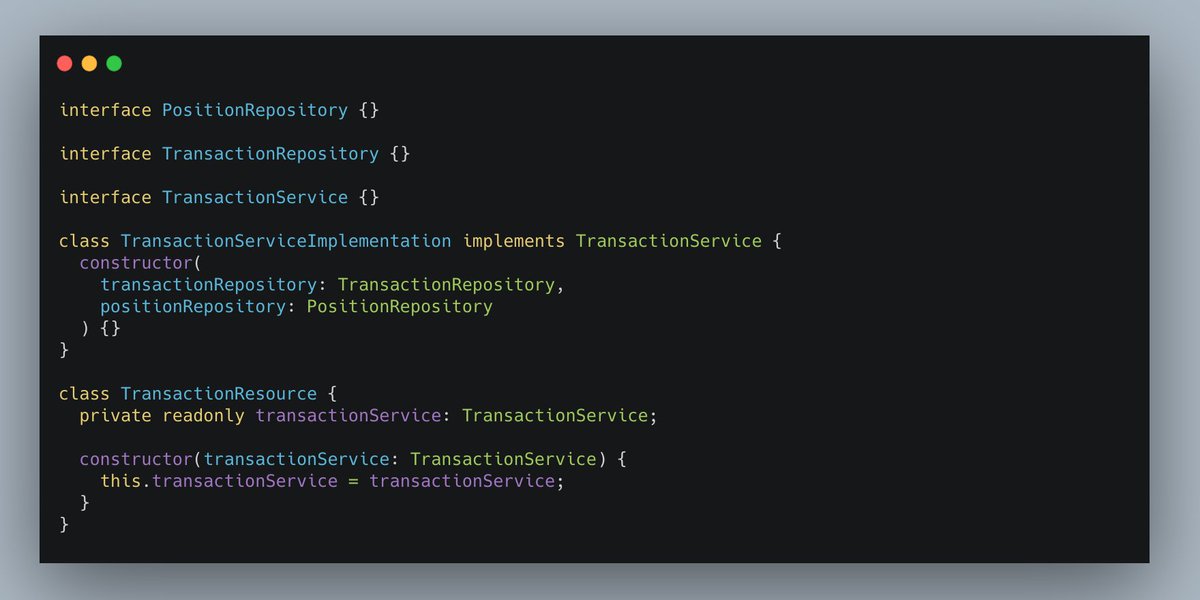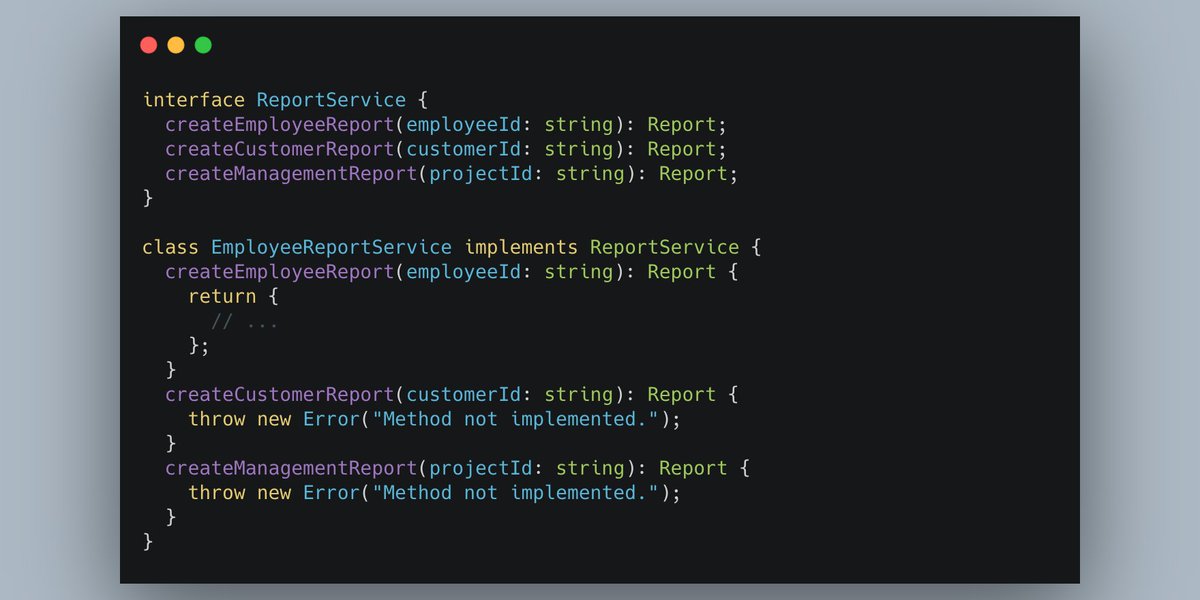
Imagine every device manufacturer created their own plug that only they were allowed to manufacture. You'd need at least one cable for each device to charge. Gladly we have USB as a standard.
The Dependency Inversion Principle solves this issue for software.
🧵🔽
The Dependency Inversion Principle solves this issue for software.
🧵🔽
1️⃣ What does it state?
Modules that encapsulate high-level policy should not depend upon modules that implement details. Rather, both kinds of modules should depend upon abstractions.
Modules that encapsulate high-level policy should not depend upon modules that implement details. Rather, both kinds of modules should depend upon abstractions.
This may sound a little complicated, but you can break it up, as follows:
1. High-level modules should not depend on low-level modules. Both should depend on abstractions (e.g., interfaces).
1. High-level modules should not depend on low-level modules. Both should depend on abstractions (e.g., interfaces).
2. Abstractions should not depend on details. Details (concrete implementations) should depend on abstractions.
Still not better?
Okay, view it this way:
Don't let anything you build depend on a concrete implementation of something. Better depend on an abstract description of a contract and let any implementor decide how to satisfy that contract.
Okay, view it this way:
Don't let anything you build depend on a concrete implementation of something. Better depend on an abstract description of a contract and let any implementor decide how to satisfy that contract.
What you see here is one way of structuring a backend API. A resource layer that implements the specifics of the API, a service that contains the business logic, and repositories that handle the persistence layer (e.g. database interactions).
If you take a closer look, you can see that the high-level class (resource) depends on a concrete lower-level class (service) which itself depends on two (more) lower-level classes (repositories).
The control flow thus goes from left to right, from the highest to the lowest level. It is like a Singly Linked List or even better a Tree. Every higher-level module references at least one lower-level module. 

3️⃣ What does it try to prevent?
Whenever you couple a module (a class, a function, a whole module) to another module, that first module depends on a lot of lower-level detail.
Whenever you couple a module (a class, a function, a whole module) to another module, that first module depends on a lot of lower-level detail.
In object-oriented systems, this also means that you can only replace the logic you depend on by deriving from exactly this class and overwriting existing logic. This is pretty tight coupling and a lot of inflexibility.
It becomes pretty difficult to replace lower-level logic, and changes to the lower-level logic might have a larger impact on the higher-level one.
Just imagine you'd now restructure the TransactionService from the example. You couldn't tell, without taking an explicit look at the TransactionResource, that you perhaps now have to also make adjustments there.
Another issue is the direct dependency on the lower-level module. If you apply this example to a library, and class A depends on class B, and both originate from different modules, a user would always have a dependency on module A and module B (transitive).
A user couldn't even choose to not take module B, because the direct relationship and thus a dependency exists.
4️⃣ Fixing the issues
You can inverse the control flow by letting each concrete implementation either depend on an interface or implement said interface, as seen below.
You can inverse the control flow by letting each concrete implementation either depend on an interface or implement said interface, as seen below.

Instead of the control flow going from the highest to the lowest level modules, there is now an abstraction in-between them.
Before you shout it out loud: yes, this adds more code overall, as each interface also needs to be described first.
Before you shout it out loud: yes, this adds more code overall, as each interface also needs to be described first.

But do you remember the issue with module dependencies?
Instead of module A now also requiring module B, module B now requires module A (given module A defines the interface), and this gives users the choice whether they want to pull in module B, as well, ...
Instead of module A now also requiring module B, module B now requires module A (given module A defines the interface), and this gives users the choice whether they want to pull in module B, as well, ...
... or want module C as an alternative to providing another implementation of the interface, which might be a better option for their use case.
5️⃣ Should you care?
Well, it depends.
In dynamically typed languages like JavaScript, you already depend on interfaces pretty much everywhere, as you can simply call any method or property on any object. As long as a user provides everything you require, you're good to go.
Well, it depends.
In dynamically typed languages like JavaScript, you already depend on interfaces pretty much everywhere, as you can simply call any method or property on any object. As long as a user provides everything you require, you're good to go.
But as soon as static typing comes into play, you should indeed care. You gain all benefits described here, and it'll improve your code quality, usability, and maintainability a lot.
In the end, the benefits weigh pretty heavy, and should not be ignored.
In the end, the benefits weigh pretty heavy, and should not be ignored.
6️⃣ Show Your Support
You can read this thread in the form of a blog post if that suits you better. You can find the link below.
blog.oliverjumpertz.dev/dip-the-depend…
You can read this thread in the form of a blog post if that suits you better. You can find the link below.
blog.oliverjumpertz.dev/dip-the-depend…
And did you know that I have a newsletter where I share valuable insights, especially on how to upskill yourself?
You can read all past issues online, so no need to subscribe directly. Test it out first.
getrevue.co/profile/oliver…
You can read all past issues online, so no need to subscribe directly. Test it out first.
getrevue.co/profile/oliver…
• • •
Missing some Tweet in this thread? You can try to
force a refresh





